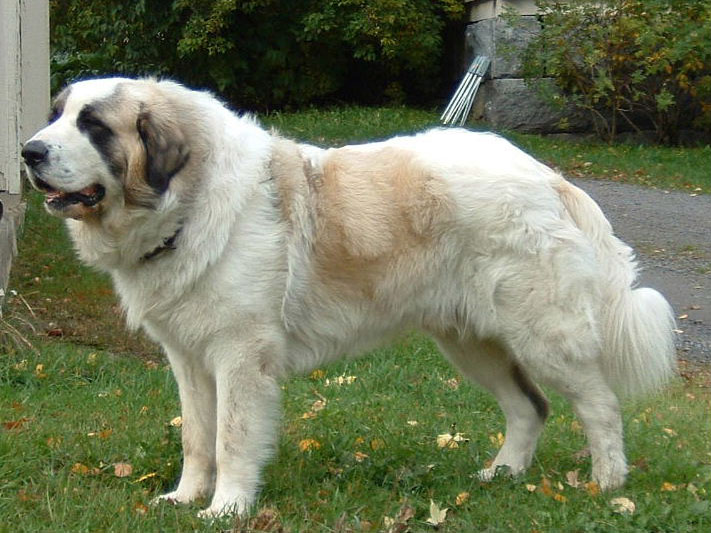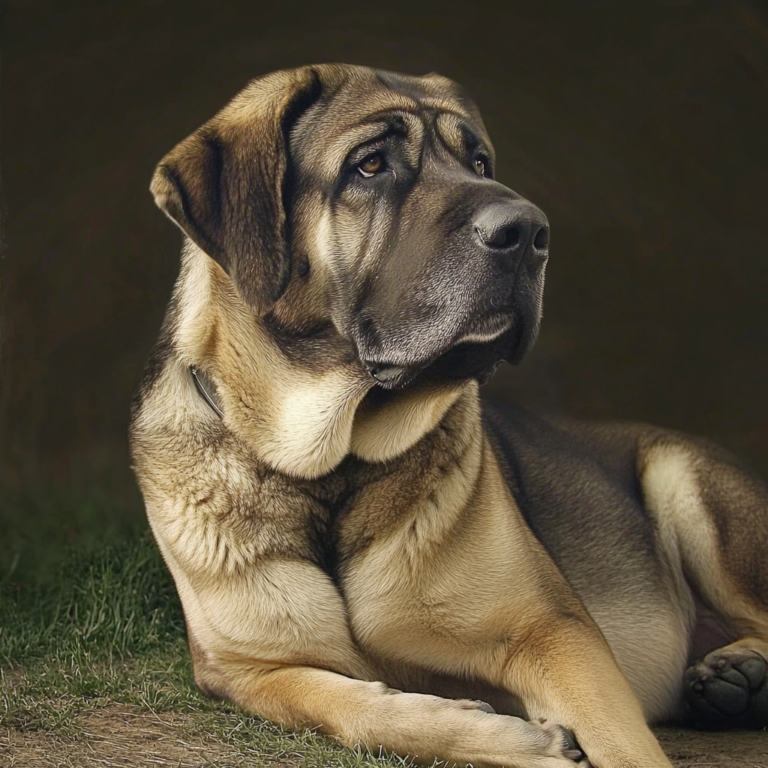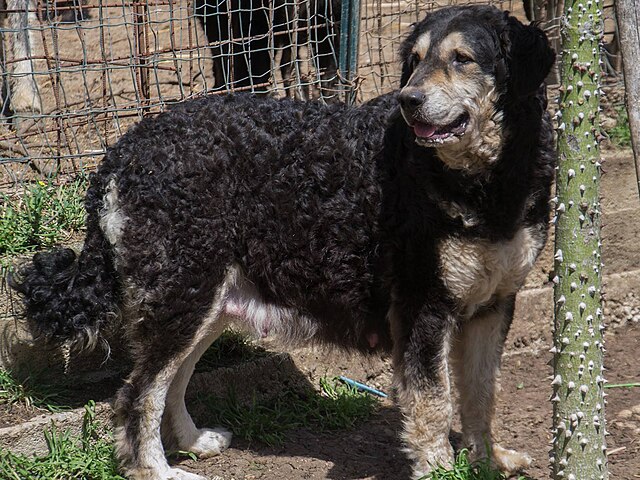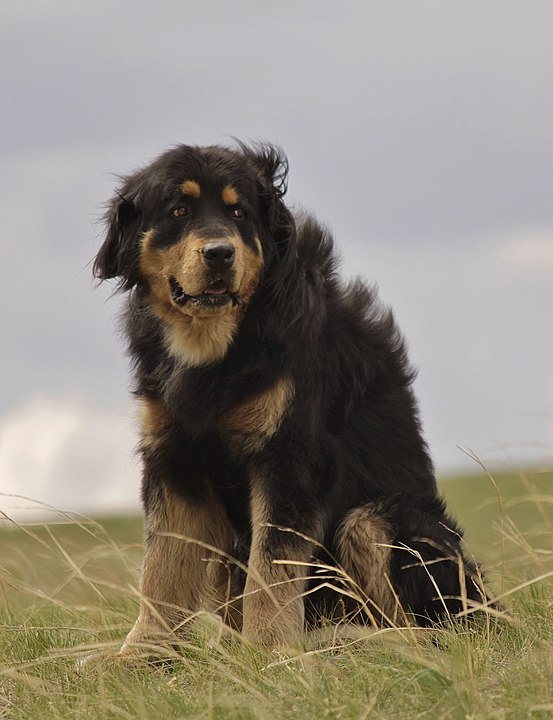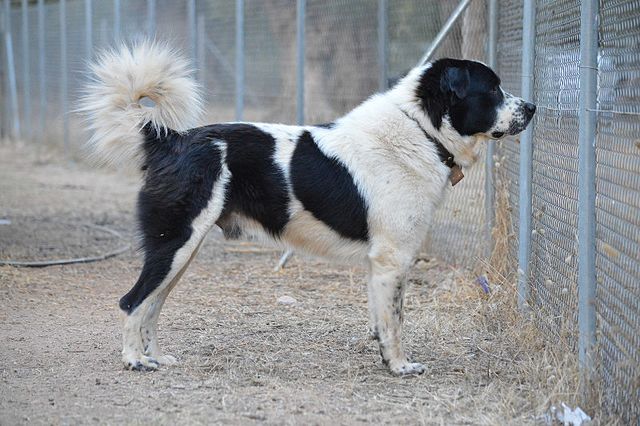The Pyrenean Mastiff is friendly to those whom he knows and trusts, although protective of his family. This intelligent molosser breed from Spain is a silent guardian and working breed who watches and protects when necessary. Originally tasked with protecting flocks of sheep in harsh climates, he is brave enough to take down large predators such as wolves if necessary. Oftentimes, only four or five Pyreneans would protect flocks of up to a thousand sheep! This is one of the oldest and most primitive of the Livestock Guardian Dogs. Although they have a similar name, the Pyrenean Mastiff is not the same breed as the Great Pyrenees although the two breeds are related. Along with the Spanish Mastiff, all three breeds developed in a similar area and were used for comparable tasks.
Pyreneans are obedient when trained although do require an owner who upholds firm household rules. Without any rules they may try to push boundaries – an obvious problem for such a giant breed. For this reason they are recommended for experienced owners only. Obedience training is non-negotiable and must be taught. As an independent thinker, training doesn’t come as natural to them as other breeds created to work with people so they will need to be motivated to work! Use plenty of praise and positive reinforcement and start early while they are still small.
Pyrenean Mastiffs have few health issues (hip dysplasia and bloat are seen occasionally) and live fairly long compared to other giant breeds – 10-13 years. This massive breed does require exercise although puppies shouldn’t be walked long distances. They need time for their bodies to get used to the routine and joints need to finish forming. Do take note, however, that even healthy Pyreneans tend to drool fairly excessively and shed heavily twice a year. They do require regular grooming. The thick double coat needs to be brushed every few days and nails must be trimmed regularly – including dewclaws. They don’t need frequent bathing although should be washed when necessary.
Temperamentally, Pyreneans are laid-back and calm. They tend to be reliable and steadfast companions who get along with other pets (even small ones) and children alike. They also don’t tend to mind being left alone or suffer from separation anxiety in general. Fearful and phobic Pyreneans aren’t common as long as they have been socialized (and socialization is extra important for livestock guardian breeds – so make sure to put the time in!). For the most part this is an easy-going breed with a gentle and affectionate nature. Unlike many other Livestock Guardian Dogs, the Pyrenean Mastiff isn’t nearly as suspicious of strangers who enter the home… as long as they are welcomed by the family. They will take fast action if actual danger or a home intrusion takes place, however!
Pyrenean Mastiffs who live in high-traffic areas tend to be louder-than-average dogs since they were bred to bark a warning at anyone entering their territory. Although teaching a quiet command is very possible, it is likely that they will need that command frequently as a reminder. It can be hard to train one to stop completely since it is so ingrained in their makeup. Those that live in more remote or quiet atmospheres are much quieter, however. The breed is also more likely to resource-guard than other breeds, meaning they might become possessive of food or toys. They should be taught the “leave it” and “drop it” skills early in life. It is helpful for all Pyrenean puppies to learn these 3 commands while young.
Be aware that the giant Pyrenean does require a lot of food and is therefore more expensive to keep than a smaller breed. He also fares best in a larger home, ideally with a yard. He was originally bred for traveling with the flock and, while not a super active fellow, does expect to stretch his legs often. A ranch or farm would be ideal, although a large home could suffice. This is a breed best kept by those who can afford to take care of him properly.
